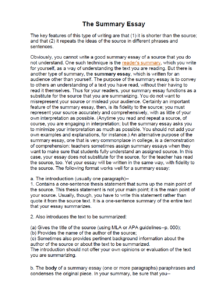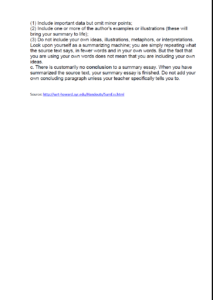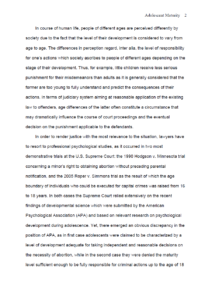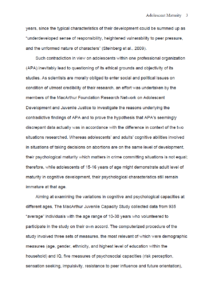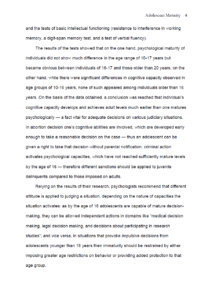Toll-Free US & Canada 24/7:
1-770-659-7014
As a precautionary health measure for our support specialists in light of COVID-19, our phone support option will be temporarily unavailable. However, orders are processed online as usual and communication via live chat, messenger, and email is conducted 24/7. There are no delays with processing new and current orders.
Summary Essay Example
Summarizing a piece of writing is essential for quickly addressing the paper’s purpose. In school, students should read and study text and be able to identify its primary intentions in their own words. A summary is a great example of how students can determine whether they understand a written work in education. Failing to recall the key points of an article means students do not truly comprehend it. So they must formulate a strategy to assimilate it.
When students write a synopsis, they ascertain the author’s purpose in writing the article and state the key points. In particular, a summary essay helps others, including scholars and those interested in a specific field, quickly access an extensive overview of an express resource.
Summary Essay Structure
When writing a summary essay, students should know its basic structure. The summary length varies depending on the text size. Articles that are a few pages long will require at least a couple of paragraphs, but a short passage may produce a quick one-paragraph essay. Nonetheless, a summary essay template comprises three major sections:
- Introduction – identify the author, the name of the text, and a thesis statement that distinguishes the main ideas of the paper in question.
- Body – find evidence in the article that supports the thesis. Cite one passage for each body paragraph, and explain how the passage bolsters the thesis statement.
- Conclusion – recap the significant points discussed in the body to answer the “So what?” question.
Summary Essay Outline
Before writing their essay, students must know the proper summary essay format to follow. A summary essay must be in paragraph form, and it may contain one or multiple paragraphs depending on the text size they are summarizing. Students may not insert any interpretations or opinions; they may only include original thoughts from the text.
The writers must introduce each of the author’s claims with a topic sentence, followed by a supporting quote and an explanation of that quote. Every sentence must contribute to the main point of the summary. Students need to use applicable transitions between sentences to ensure the summary essay flows. Overall, the writers should be able to help future readers comprehend a source quickly and thoroughly.
How to Write a Summary Essay
Before beginning to write a summary essay, reading the paper to understand it is imperative. Students must pinpoint the article’s purpose and locate supportive details. Next, they may take notes to organize their thoughts and investigate the central ideas. Afterward, they may learn how to start a summary essay.
They begin their objective-voiced paper with an introduction that exposes the author and the work’s title, and generally, they include the author’s thesis in this sentence. Next, students lay out the main body. Depending on the article’s length, the body may span several paragraphs to encapsulate every key point the student discovered. Next, they quote the author and explain the validity of their chosen quotes. Lastly, the conclusion wraps the entire summary essay up.
